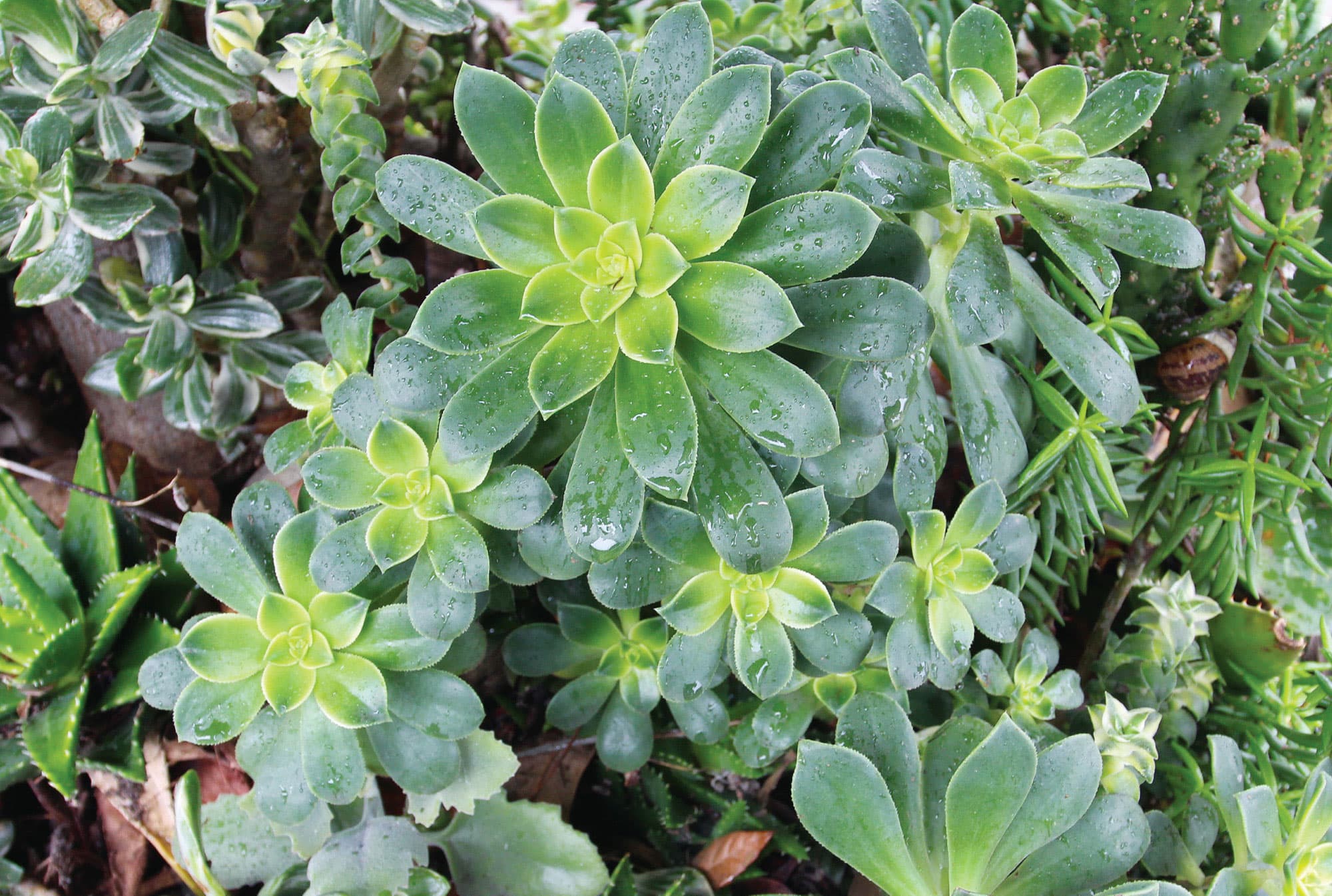3
Cactuses and Succulents Indoors
Succulents don’t grow in caves! While this may sound obvious, the attempts homeowners make to bring plants indoors can amount to trying to grow a plant in a deep, dark cavern. Some plants can be acclimated if basic requisites are provided, but for others this is can be mission impossible. Conditions considered creature comforts and necessities to humans often create an alien and oppressive environment for the plant kingdom.
The southern tier of the United States, and other locations globally that fall along the same latitudes, are spoiled with being able to grow a huge array of succulents outdoors with little bother. Further north from there, it becomes even more imperative that indoor culture compensate for extreme seasonal cold—either all year-round or just in the winter months. Staying indoors can save succulents from frosty and freezing conditions, but it can take its toll on their appearance. A general rule of thumb is to grow succulents outdoors for as long as possible during the frost-free months of any climate region. This affords plants maximum time under “normal” conditions to grow and strengthen and be more able to handle the upcoming inside stint. Bring them in before the first seasonal frost hits in fall, and then return them outside after the last danger of frost has passed sometime in spring. During their winter-protection period, or if they are year-round indoor residents, the following are some things to do for the best possible success.
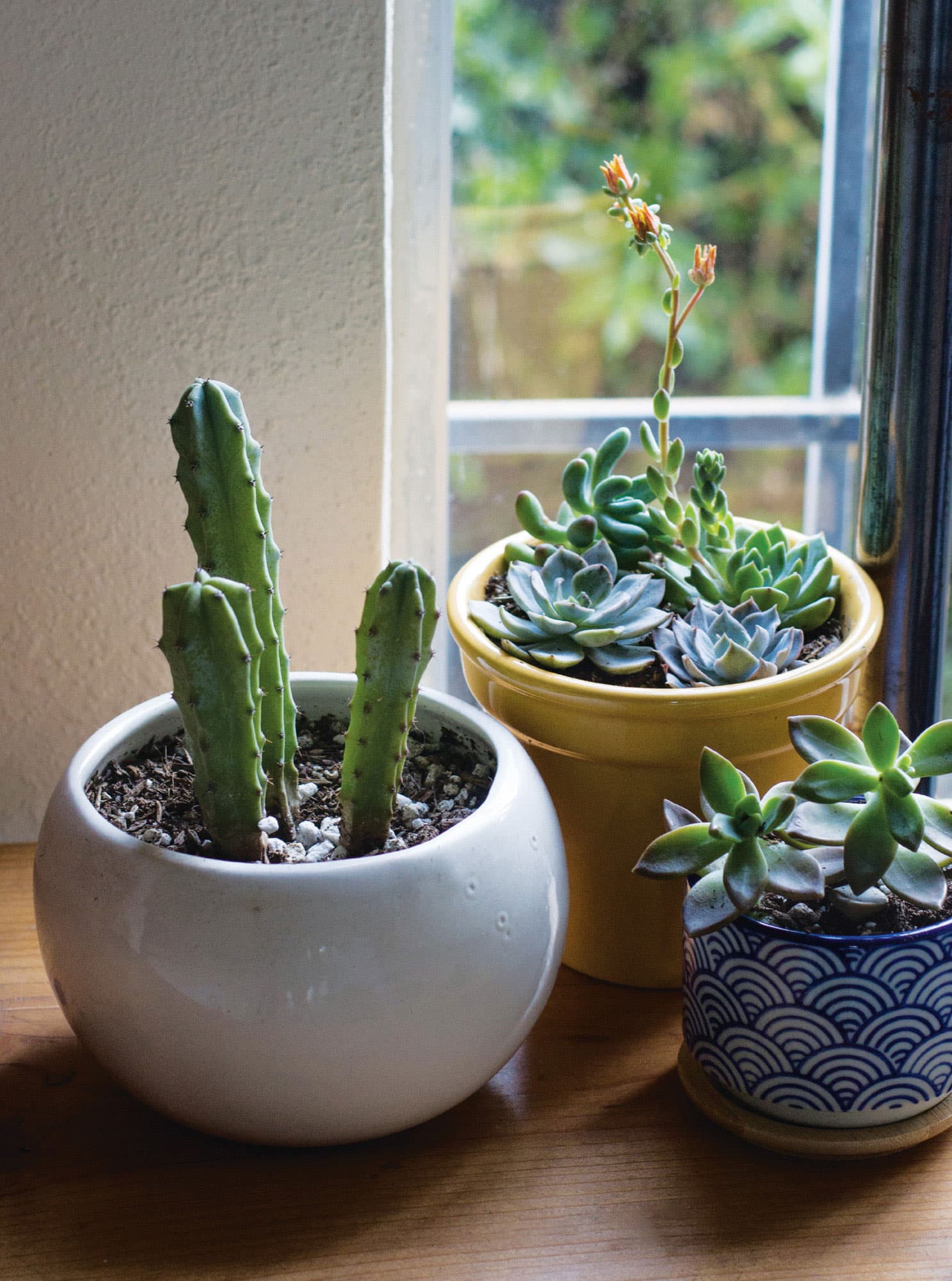
A trio of decorative containers with simple, interesting plantings.
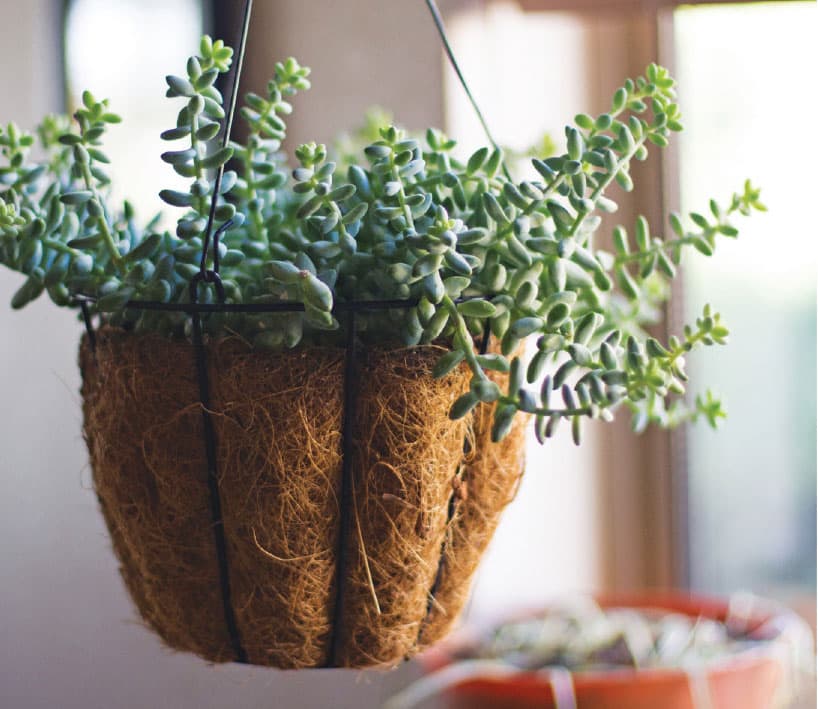
Spaces between the ranks of leaves showing the stem (internodes) are an indication of stretching or “etiolation.” This is a sign of insufficient sunlight, as with this hanging basket sedum.
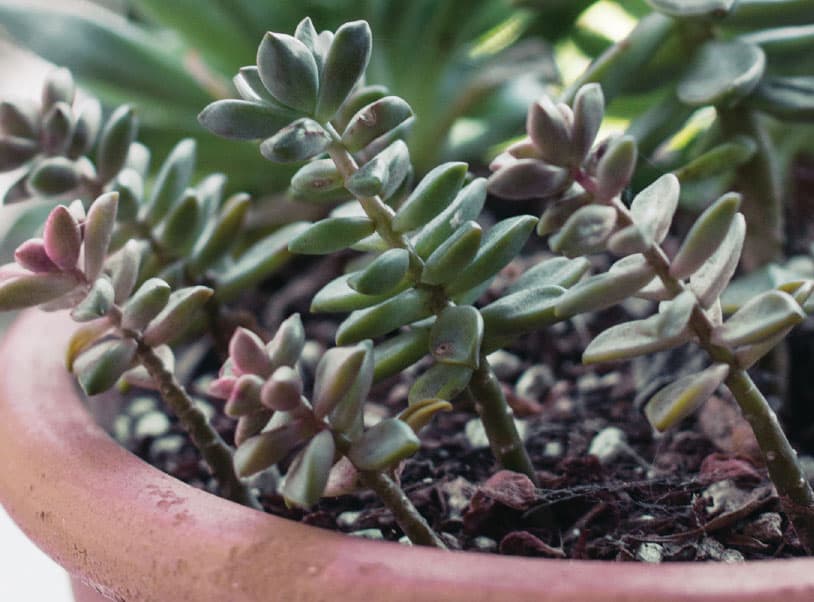
Graptosedum showing some stretching.
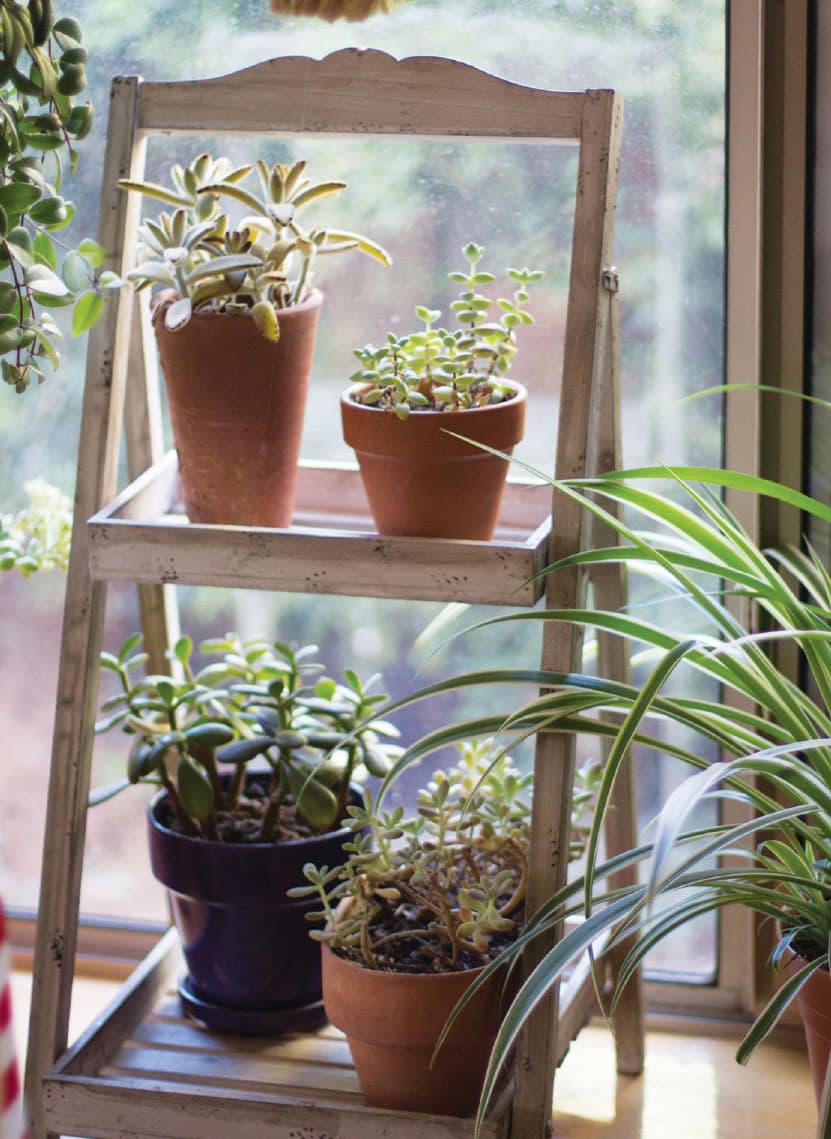
When growing indoors, proper light is key. An enclosed porch with windows on multiple sides is one of the best placement options for keeping your succulents happy and healthy.
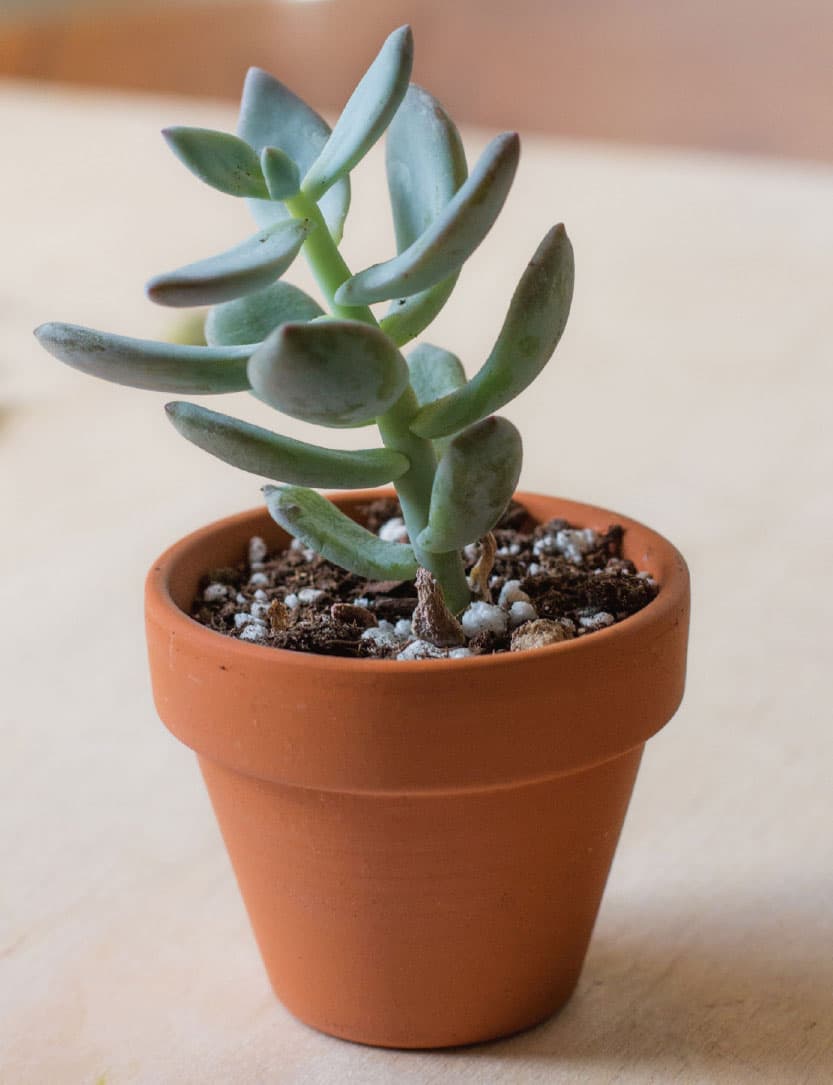
This intergeneric succulent like Graptoveria is showing excessive etiolation with widely spaced internodes.
LET THERE BE LIGHT!
Sufficient light is paramount to raising healthy succulents, and that goes for both outdoor and indoor gardening. Succulents are highly susceptible—they can begin to show the effects after being deprived of proper light conditions for as little as two weeks. This highly disfiguring condition causes severe stretching, blanching and fading of color, and general feeble, weak growth.
Choose a location near an east-, south-, or west-facing window—east and west are the best choices for cactuses and succulents during late spring to fall, and a southern exposure is best during winter when the sun is the lowest in the sky. A northern exposure will always be a bad choice since it generally won’t provide sufficient light at any point in the year.
A good supplement, if your space and situation allows, is the use of artificial lighting. There are several options to choose from, but the mainstream reliable choice is fluorescent lighting. Be sure to use bulbs that say “full spectrum”; most of these will have wording in the description that calls out “grow light.” Lights need to be suspended no more than 12 inches (30.5 cm) above the plants and be on continuously for at least 12 to 14 hours a day.
There are a few succulent choices that are at home with less light and make great indoor plants. Many haworthias, gasterias, gasteraloes, and sansevierias get along just fine with indirect bright light and no extra angst or fuss. These are some of the most forgiving of the succulents that allow their location in the home to take up residence in places that are really “off limits” to most of the others. This is not something you could do with a Crassula ovata (jade plant), as in short order it would begin to stretch and become weak! It is a common desire to take a colorful, mixed succulent planting and display it on a dining room table or an end table in a living room for obvious reasons, but it will not thrive being that far away from a window light source. It is best to move plants into presentation places for guests to view, but move them back once company has left. But, back to our low-light heroes—gasterias and haworthias are happy to take up a spot of honor as a table decoration. Of course, some ambient light is very helpful in preserving the integrity of these plants, for if kept in a dark location, they will begin to show stretching, though it will take a considerably longer time than for other succulents. Consider moving them from time to time to a brighter spot for a chance to enjoy some more perfect conditions that will increase their success when spending time in less-ideal conditions.
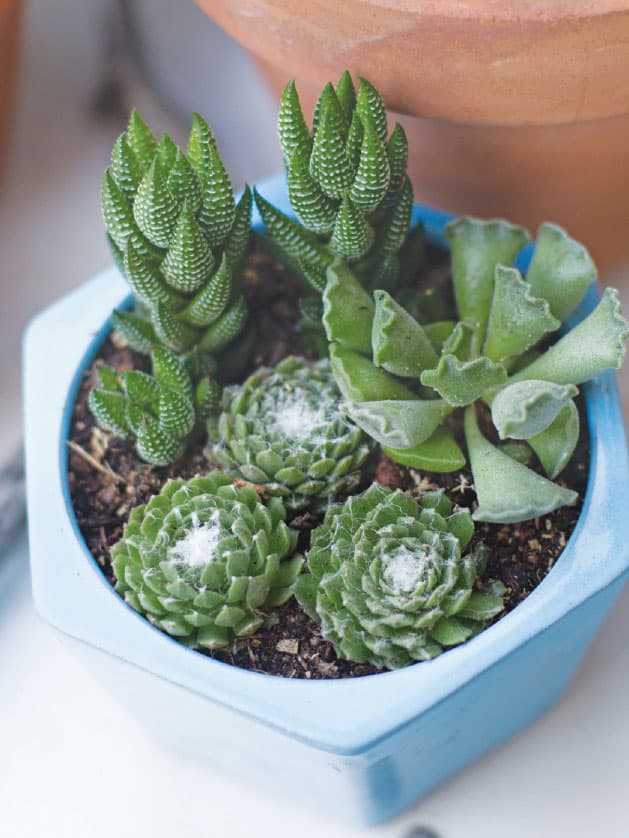
Odd numbers of plants plus three completely different shapes and textures turn Haworthia coarctata (back), Adromischus cristata (right), and Sempervivum arachnoideum (left) into an impressive living study in green and white.
THE WELL-DRAINING CONTAINER
Beautiful ceramics, plain clay, plastic, and the unconventional solutions—like an old shoe or hollowed pumpkin—all have different effects on watering practices and the retention of moisture in the soil. Whatever your choice, it is imperative that the container have at least one if not several drainage holes in the bottom. Otherwise, all your effort to develop a well-draining soil mix will be for naught: if the water can’t get through all of that good, porous soil and exit the container, it will just become a swamp in a pot! Make sure that when you water your succulents they don’t end up sitting in saucer water, as this will inevitably end up as a root rot problem. The safest practice is to water all of your plants in a sink or bathtub and return them to their saucers after they have stopped dripping.
Nonporous pots are the best choice if you want to cut down on your plant- related chores, especially if you have a lot of plants. At the same time, porous clay (or even the old boot!) can help avoid the problem of overwatering and accidental soggy soil. In the end, it is all a matter of personal choice as to what works best for the user.
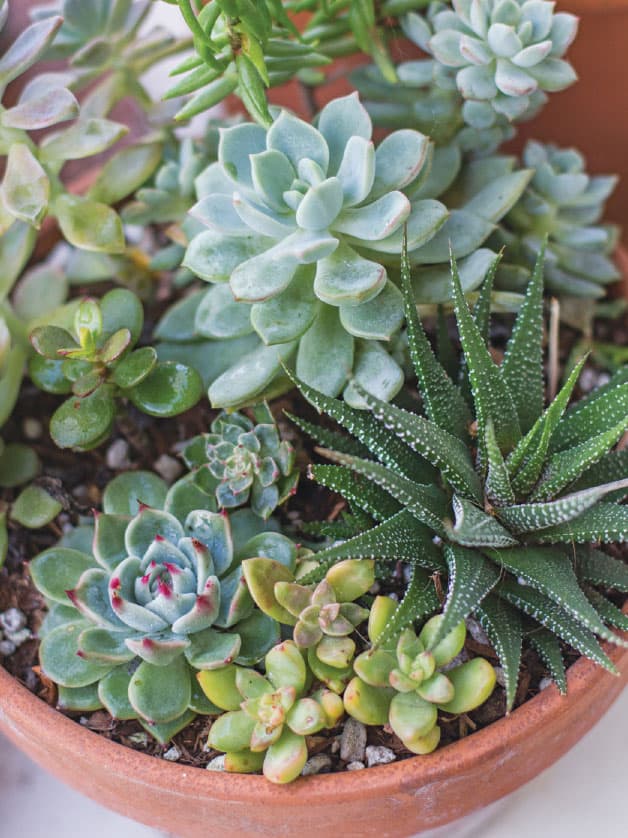
Different container materials retain moisture differently, but they all have one thing in common—they need at least one drainage hole in the bottom to make sure excess water can get out.
THE IMPORTANCE OF MOISTURE
Indoor succulents are happy with a good thorough drink with a slight drying-out period before repeating during their active growing period, namely what are considered the warmer months of the year, in spring through summer. During these growth months is also the time to feed, if you choose. Winter gets a bit trickier indoors—this is the inactive growth period, so succulents don’t want to be taking up vast quantities of water, and definitely not food! What they really want is an occasional watering, just enough to keep the roots plump so they don’t collapse. Winter is the time when houses have fireplaces burning or central heating running, which is great for keeping everyone warm and cozy, but any type of potted plant will suffer from the soil being totally sucked dry by the ambient warm and very dry air. This means it is imperative to keep an eye on the soil of your succulents, as it will dry out. If the soil goes bone-dry for too long, it can cause the roots to desiccate to the point of collapse, and then there is little hope of the plant coming back.
And because reduced watering means plants do not get a good flush through the soil in winter like they might in summer, it is a good idea to use purified or distilled water if possible to help avoid the salt buildup that can come from municipal tap water. (Well water is generally not a problem.)
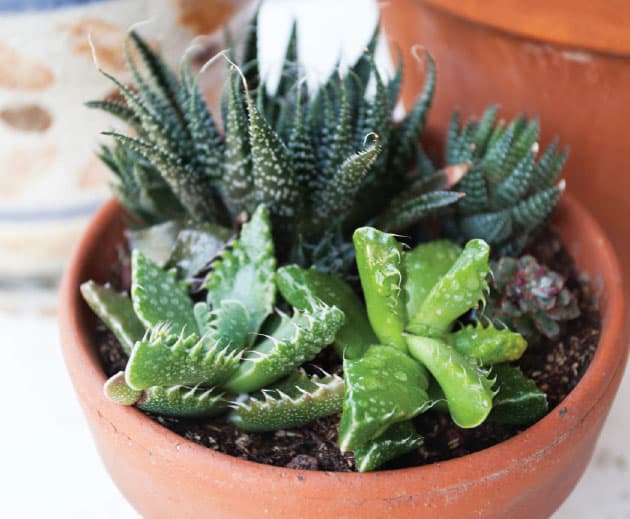
Tiger jaws (Faucaria tigrina) take front stage to some assorted haworthias.
